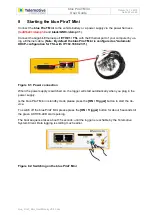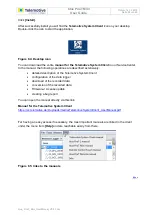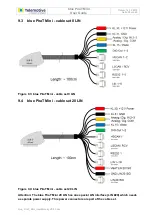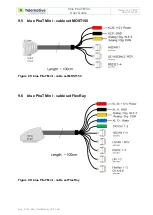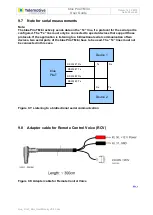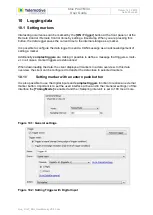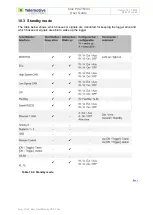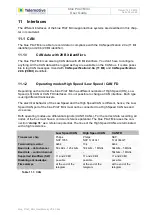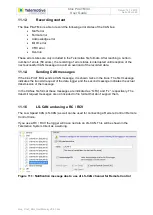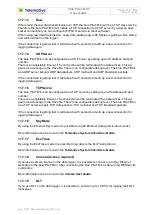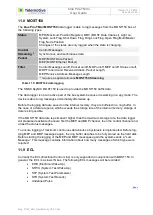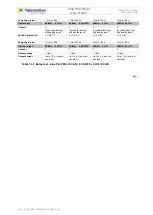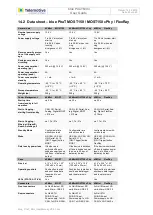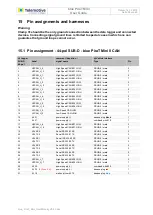
blue PiraT Mini
User Guide
Datum: 14.12.2018
Seite 36 von 60
blue_PiraT_Mini_UserManual_V3.4.1.doc
11.5 Analog / Digital Input
The blue PiraT Mini has three analog and three digital inputs, whereas respectively the first
channel is located in the logger and records the input voltage. The measuring range is between
0 V and + 20 V, the accuracy is 3 %. The sampling rate is adjustable from 1 ms to 100 s. The
switching threshold for the digital input is 7 V ± 0.2 V, see chapter 14 Data sheet.
The interfaces are combined in the cable set but can be used both at one time.
The combined ground has to be connected always!
11.6 Digital Output
The blue PiraT Mini models CAN, FlexRay and LIN have two digital outputs. The output current
is up to 1 A per channel.
11.7 Ethernet / Broad-R-Reach®
All versions of the blue PiraT Mini data logger are able to log Ethernet data. All data loggers
have two 1 Gbit Ethernet ports with RJ45 connector on the front and two more at the rear side.
The two interfaces
ETH #1 / TSL
and
ETH #2 / TSL
can be used to connect the data logger to
the PC and for the TSL (Telemotive System Link) connection.
BroadR-Reach
is an Ethernet based standard, which allows multiple components of the electri-
cal system of a vehicle to get access to information by using unshielded twisted pair wires sim-
ultaneously.
The
blue PiraT Mini
CAN & 4 CAN-FD
allows to disable the rear Ethernet ports
ETH #3
and
ETH #4
and activate the connectors
BRR 1
and
BRR 2
at the harness
to be used for
BroadR-
Reach
.
11.7.1
Supported Ethernet / Broad-R-Reach® protocols
This section gives an overview of the available protocols. When a protocol requires a license,
this will be marked.
11.7.1.1
GNLogger
For connecting a standard TCP (open socket connection) is used. Therefore the blue PiraT Mini
is a TCP slave device.
GNLogger is a proprietary serial protocol used for some ECU diagnosis.
11.7.1.2
UTF8
The blue PiraT Mini will initiate a TCP connection to a TCP server by using an open socket con-
nection (you can configure IP/Port of server via client software).
By using UTF8 data transmission the logger will write a timestamp after every detected Linefeed
(LF) from the incoming data.
If the connection is getting lost, it will take about 5 seconds to build up a new connection for
logging data again.

